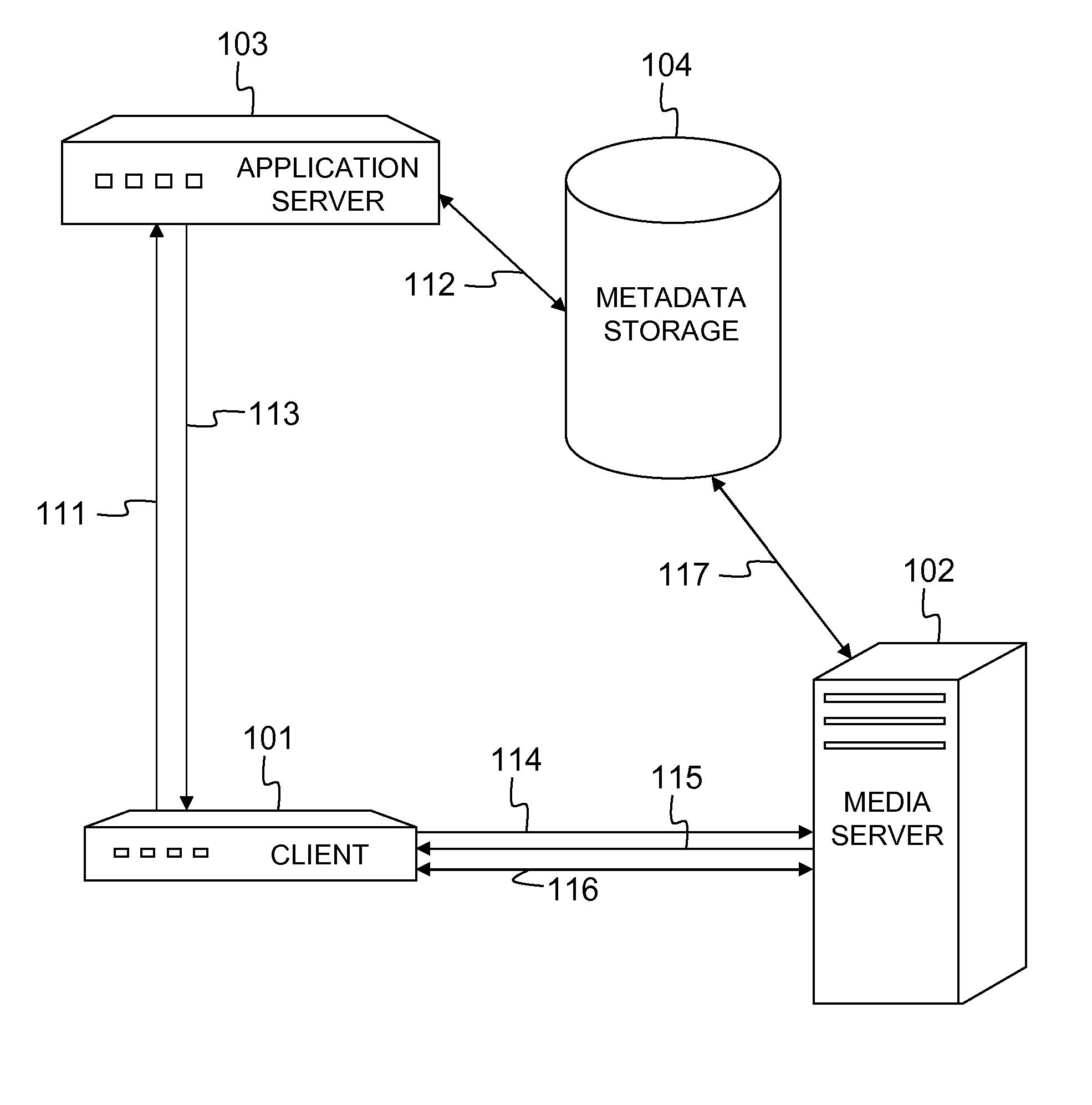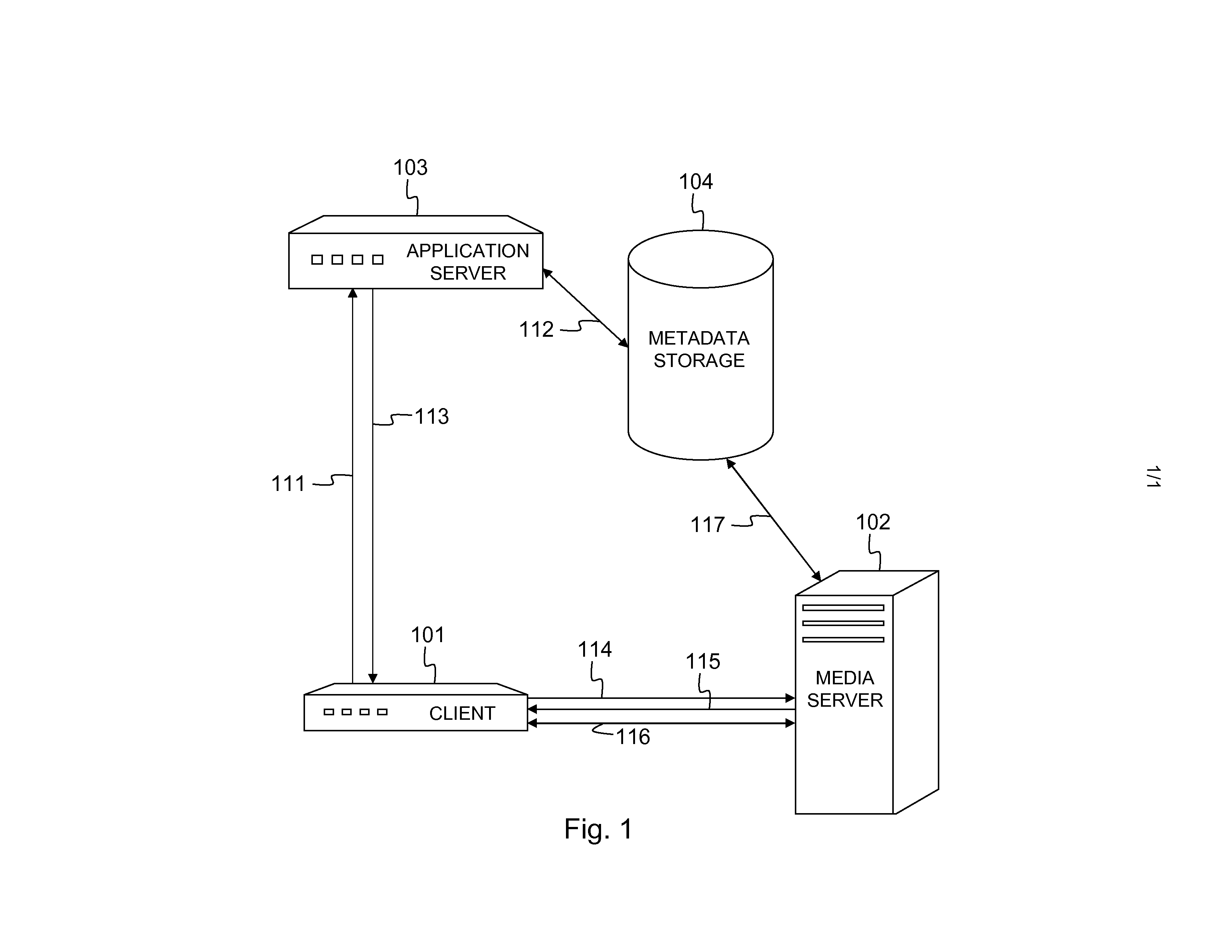Method to request delivery of a media asset, media server, application server and client device
a technology for media assets and requests, applied in the field of requests for media assets, can solve problems such as the inability of attackers to get access to other media assets stored
- Summary
- Abstract
- Description
- Claims
- Application Information
AI Technical Summary
Benefits of technology
Problems solved by technology
Method used
Image
Examples
Embodiment Construction
)
[0020]FIG. 1 shows a video-on-demand (VoD) network wherein a client device 101 is connected to a media server 102 and an application server 103. The client device 101 could for instance be a set-top box (STB), a personal computer (PC), a television set (TV) or a video decoder, located at the customer premises for receiving TV programs or media assets via a downlink and displaying those TV programs or assets to the viewer. The client device 101 typically can receive instructions from the viewer, e.g. through a remote control, and is able to forward those instructions on the uplink towards the media server 102 or application server 103. Eventually, those viewer instructions are first interpreted in the client device 101 and encoded for instance into RTSP (Real-Time Streaming Protocol) format or—depending on the nature of the on-demand media service—variant request protocol formats like SIP (Session Initiation Protocol), ITU's H.323 protocol, HTTP (Hypertext Transfer Protocol), IGMP (...
PUM
 Login to View More
Login to View More Abstract
Description
Claims
Application Information
 Login to View More
Login to View More - R&D
- Intellectual Property
- Life Sciences
- Materials
- Tech Scout
- Unparalleled Data Quality
- Higher Quality Content
- 60% Fewer Hallucinations
Browse by: Latest US Patents, China's latest patents, Technical Efficacy Thesaurus, Application Domain, Technology Topic, Popular Technical Reports.
© 2025 PatSnap. All rights reserved.Legal|Privacy policy|Modern Slavery Act Transparency Statement|Sitemap|About US| Contact US: help@patsnap.com


